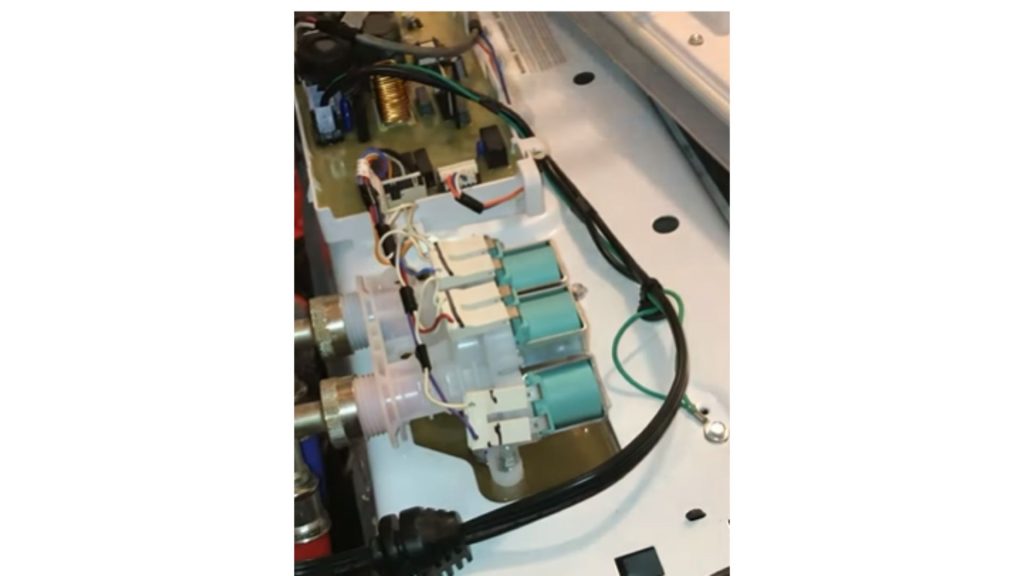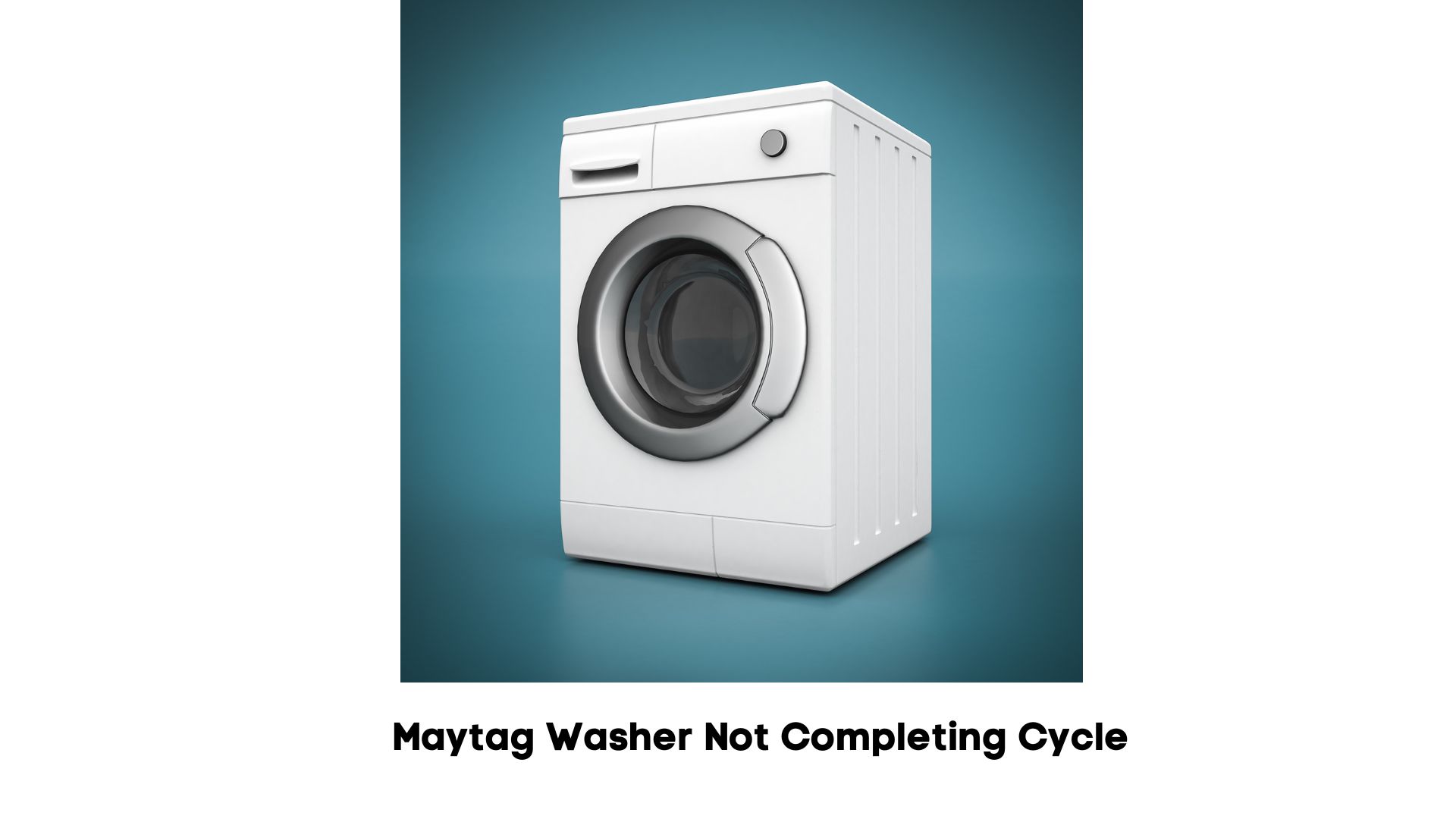A washer that doesn’t complete its cycle is more annoying than a machine that doesn’t start at all. Why would a Maytag washer start a cycle and then stop before completing it? You can blame one or more of the following:
1). The Lid Is Open
This should be your first consideration. Washing machines cannot run with an open lid. It isn’t a simple matter of preventing the water from splattering the laundry room. Washers are dangerous.
What if a child sticks their head into a unit with a spinning drum? To avoid such accidents, brands like Maytag have included safety mechanisms that prevent the machine from running when the lid is open.
But what if you closed the lid, but the problem persisted? The lid switch is broken. As a result, the machine thinks the door is open. You should check the door lock assembly.
2). The Power Supply Is Unreliable
When experts mention power supply issues, many laypeople turn to the electrical panel. They want to blame a Maytag washer’s power supply issues on the circuit. And sometimes, they are correct.
You can disrupt a machine’s operations by pairing it with a smaller circuit that can’t meet its electrical demands. This is dangerous because the machine must work harder to compensate for the insufficient current. You risk burning out the motor.
Similar challenges can occur if you install thin wires that can’t transmit the current the unit requires. However, in most cases, the problem lies with the washer’s power cord, especially when it develops breaks and tears.
Do you see signs of arcing, such as burn marks and the smell of burning rubber? What about the plug? Is it snug in the outlet, or does it feel loose when you tug at it? Power supply issues are broader than homeowners realize.
You should check every component that affects the washer’s power supply. That includes the lines inside the machine.
3). The Control Board Is Defective
The control board runs everything in the machine. The door lock mechanism can transmit inaccurate information, tricking the machine into thinking a closed door is open. But if you’ve inspected and ruled out the locking mechanism as a potential culprit, the control board is probably at fault. Test it with a multimeter.
4). The Water Inlet Valve Is Defective

The water inlet valve allows water from your home’s plumbing system to enter the drum. The unit will call for water during the rinse cycle. What happens when the valve refuses to open? The machine won’t complete its cycle.
But you shouldn’t replace the valve without inspecting it. Valves can fail because of clogging. If your area has hard water, the minerals will accumulate, creating obstructions. This paper from the Department of Home Economics and Ecology (Harokopio University) in Greece makes the same mistake you see in most homes.
It emphasizes the impact of hard water on your laundry, which matters. The minerals in hard water will interfere with the soaps and detergents. Unfortunately, it ignores the threat hard water poses to a washing machine’s lifespan.
If you allow the effects of hard water to go untreated, incomplete cycles will be the least of your worries.
5). The Drain Is Blocked
Hard water is not the only source of clogging. Laundry produces lint, which can accumulate in the drain, preventing the dirty water from leaving the unit. A Maytag washer that can’t drain won’t complete its cycle.
If you can’t see any obstructions in the drain or hoses, test the pump for continuity. A defective drain pump and motor can create drainage issues.
6). The Pressure Switch Has Failed
The pressure switch keeps an eye on the water level. It cuts the power to the inlet valve when the water reaches the correct level. A faulty pressure switch cannot determine whether or not the water has drained out of the unit, which is problematic because it prevents the machine from completing its cycle.
How To Fix Maytag Washer That Is Not Completing Cycle?
- Hold the cancel button for several seconds. All the lights should go off. The goal is to clear any running cycles. Afterward, turn the knob to ‘Drain and Spin’ before pressing ‘Start.’
- Try to match the water temperature to the cycle. For instance, ‘Rinse and Spin’ uses the cold water valve. Therefore, using hot water would create complications. Use the functions and programs as recommended in the manual.
- Use the manual’s wiring diagram to test the timer for continuity using the multimeter. People tend to misdiagnose this component. If you need a new timer, get the washer’s serial number and send it to Maytag. They will identify a suitable replacement.
- Test the pressure switch for continuity. Replace the component if it fails this test. You should also clear any debris you find in the air tube running between the switch and the tub. If the tube is leaking, get a new one.
- You can’t use a machine with a defective control board. While repairs are possible in some cases, a new board will give you peace of mind.
- If the drain pump fails the continuity test, replace it. You can fix some pumps by unclogging them.
- Unclog the drain hoses.
- Straighten kinked hoses.
- Unclog a water inlet valve.
- Replace a damaged inlet valve that fails a continuity test with a multimeter.
- If the door lock has a mechanical or electrical failure, replace it, especially if it refuses to latch properly. You can confirm your suspicions by testing the lock switches with a multimeter. Replace switches that don’t have continuity.
- Make sure the water faucets are fully open. Unclog blocked pipes and replace them if you observe severe damage.
- Use a water-softer to resolve issues related to hard water. This paper in the Water Research journal recommends an electrochemical water softening method for consumers in isolated locations that can’t access chemical and ion exchange tools. Many homeowners use conventional whole-house water softeners that filter all the water coming into their homes. Angi expects such systems to cost you $500 – $6000.
- Unclog the drain system and replace damaged drain pumps and motors.
- Replace damaged power cords, plugs, and outlets.


Washer goes thru complete cycle to off wash wet small amount of water have to go to drain and spin to complete cycle . Washer operates normal except wet at cycles end. Any thoughts? Maytag Mod MVWC416FWO,